
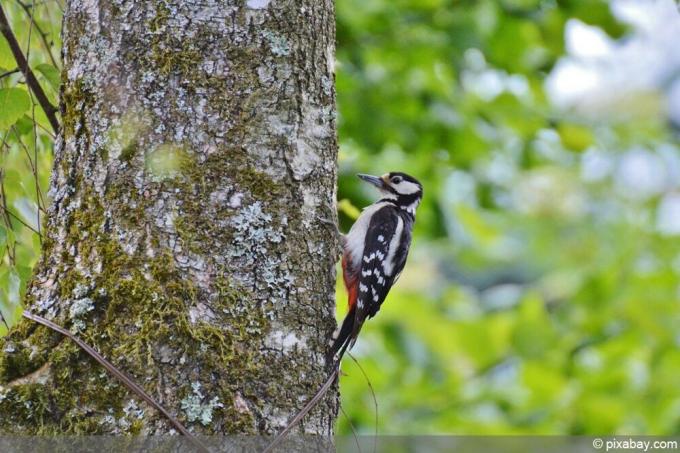
Table of contents
- breeding behavior
- material
- tools
- construction
- Dimensions
- building instructions
- cutting
- Cut entry hole
- assembly
- suspension
The intensive agricultural use of meadows, fields and forests has led to fewer and fewer natural nesting sites for birds. The so-called cave breeders, who deliberately hide and raise their offspring in a breeding cave, are particularly affected. The most common cave breeder is the woodpecker. In order to secure its existence, self-made nesting boxes can be of great help.
breeding behavior
Woodpeckers lay their eggs in cave-like structures, which they prefer to dig in trees. They also incubate the eggs and raise their young in these burrows. Young woodpeckers are therefore also typical altricials. The nest cavity offers special protection against external influences and especially against nest robbers. If woodpeckers do not find suitable trees in which to create a breeding cavity, they will not reproduce. Then at the latest it can be helpful to create a kind of artificial cave with a self-made nesting box. However, the specific requirements made by woodpeckers must be taken into account. The main focus must be on the dimensions, the size of the entrance hole and the height at which the nest box is placed.
material
A nest box is naturally exposed to wind and weather. It therefore goes without saying that this requires building materials that can withstand the effects of the weather. By far the most important material is wood. Traditionally, the nesting box is made of wooden boards. Some types of wood are better suited for this than others. Spruce boards, for example, have all the properties that are needed. Poplar boards are also ideal for a wooden breeding cavity. Whichever wood you choose, the most important thing is that it has a high resistance to moisture. It should also not tear easily. So-called compressed wood and plywood, on the other hand, are completely unsuitable - at least if the nest box is to be used for more than one season. Natural spruce and poplar boards are easily available from hardware stores or specialist timber shops. They also cost relatively little.
A notice:
The boards should not be planed smooth. The birds find a better grip on an unplaned, rough surface.
Other materials you will need:
- two metal hinges to be able to open the lid later
- Material to seal the roof such as zinc sheet or tar paper
- a hook and eyelet to securely close the nesting box later
- rustproof galvanized nails or brass screws to assemble the parts
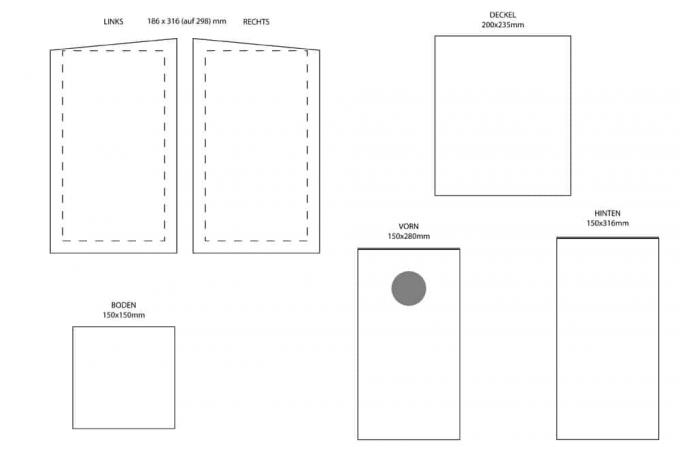
In addition, you should provide yourself with a water-repellent material such as linseed oil. With this, the entire nest box is impregnated and made water-repellent after completion. Chemical impregnating agents and paints are taboo. With them there is a risk that the health of the birds will suffer as a result of gas emissions. Incidentally, the impregnation must be renewed every year.
tools
A nest box is a relatively simple construction that does not require much effort. The tools needed for construction should therefore normally already be in your possession. Specifically you need:
- Tape measure, pencil and set square for marking the correct cuts on the components
- a jigsaw or a handsaw for the cuts
- Hammer, screwdriver and pliers
- Drill with hole saw attachment to saw out the entry hole
Tip:
If you don't have a hole saw attachment, you can use a drill. A hole is simply drilled with it and then widened manually with a rasp to form an entry hole.
construction
As already indicated, a nesting box is a downright simple construction. In principle, it only consists of four side parts, a floor part and a roof. There is an entrance hole on the front of the box so that the animals can get inside. A perch should be avoided. On the one hand they do not need the animals, on the other hand it would make it easier for predators to get their prey. The roof of the nesting box construction can be opened, as can the back. The roof can later be used to check what it looks like inside. And the open back of the box is cleaned after the breeding season.
Dimensions
Birds vary in size and have different needs. It is logical that the size of a nesting box should also be tailored to the bird species. Basically, a nest box will be used primarily by cave breeders. We want to build a nest box especially for woodpeckers. Regardless of the woodpecker species, the following dimensions have proven themselves:
- inner width: 150 mm
- inner height: 280 mm
- inner depth: 150 mm
- Entry hole diameter: 45 to 50 millimeters
These dimensions are minimum dimensions that are required in any case for a woodpecker family. Of course, the nesting box can also be a little larger. The thickness of the boards used is also important. The ideal thickness is 18 millimeters. This means that the boards are thick enough to protect the woodpeckers inside the box from the cold later if necessary. 18 mm is also a standard thickness in which boards are usually cut. It should therefore also be very easy to get in stores.
building instructions
Building a nest box requires neither a complicated construction plan nor special manual skills. The construction is so simple that almost anyone can do it quickly and easily. In principle, only six boards are cut and then stapled together with nails. Everyone should be able to do that now.
cutting
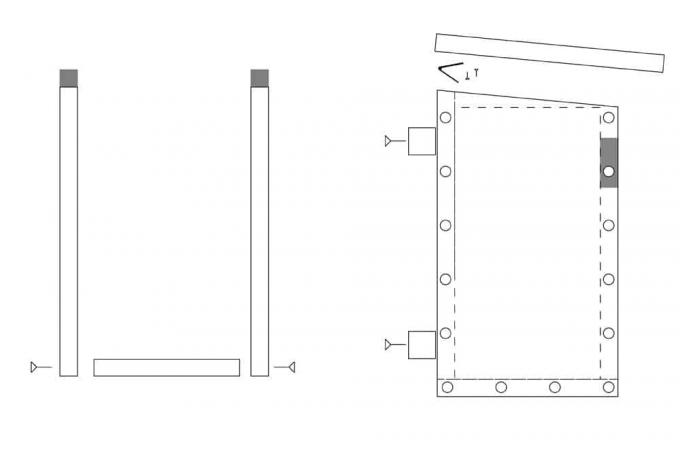
The first step is to cut the purchased boards to the right size. In order for this to succeed, the dimensions should be marked beforehand. It should be noted that the back should be slightly higher than the front to ensure a roof pitch later. This also means that the two side parts need a corresponding slope from back to front. How strong the inclination is relatively irrelevant and is up to you. It should only be ensured that water can drain off. The slopes themselves are best marked with a square. When marking and also when cutting, you should proceed as carefully as possible in order to get precisely fitting individual parts. The accuracy of fit guarantees that the finished nesting box is really tight.
Cut entry hole
Before you start assembling, you have to cut the entry hole in the front. The easiest way to do this is with a hole saw attachment on the electric drill. The hole is made in the middle of the upper third of the front. It should not be too low, but just below the roof. To do this, simply measure the middle from the left and right and draw a point with a pencil at this point. You then place the tip of the hole saw attachment on this point and drill the hole. Anyone who does not have such an attachment simply drills a hole at the designated point and then enlarges it by hand with a rasp.
assembly
First, the two side parts and the front part are nailed or alternatively screwed to the base plate. Then the three parts must be completely nailed together.
In the next step, the tar paper or zinc sheet is attached to the roof with nails or screws.
option A
Screw the back to fit into the woodpecker cavity.
The hinges are either attached to the back or to the side panels right next to the back wall. Now open the hinges to screw the roof tight.
Variant B
Before the back is inserted into the construction, the two hinges are screwed onto the front and back respectively. the side panels next to the front wall.
Then the back is inserted precisely into the opening and fixed at the top with two nails on the left and right. The nails serve as a kind of axis, with the help of which the page can be unfolded. In the lower area you also attach an eyelet. The back can then be secured with a hook on the base plate.
Finally, only the roof with the two hinges has to be screwed on.
Under normal circumstances, assembling such a nesting box does not take long. A construction time of about an hour should be sufficient. However, it is a good idea to give yourself a little more time when in doubt. When it comes to nest box construction, care is clearly more important than speed. The birds will thank you later.
suspension
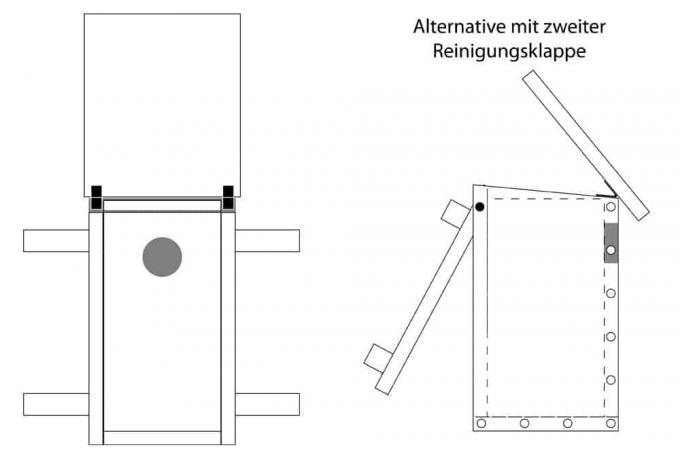
A woodpecker nest box will usually be attached to a tree. The easiest way to do this is with a bar that protrudes left and right, which is nailed across to the back. A fastening wire is attached to both sides of the bar, which of course must first be guided around the tree trunk. It is best to clamp an old, sturdy plastic tube between the wire and the bark to avoid injuring the tree. The wire is then tightened until the nest box is stable. Under no circumstances should the box be nailed directly to the tree. When attaching it, it is important that the entrance hole is on the leeward side. The box should also be placed in such a way that it cannot be reached by nest predators, especially cats. Incidentally, the best time to hang them up is autumn, so that the birds can already find shelter in them in winter.
 garden editorial
garden editorial I write about everything that interests me in my garden.
Learn more about nest boxes
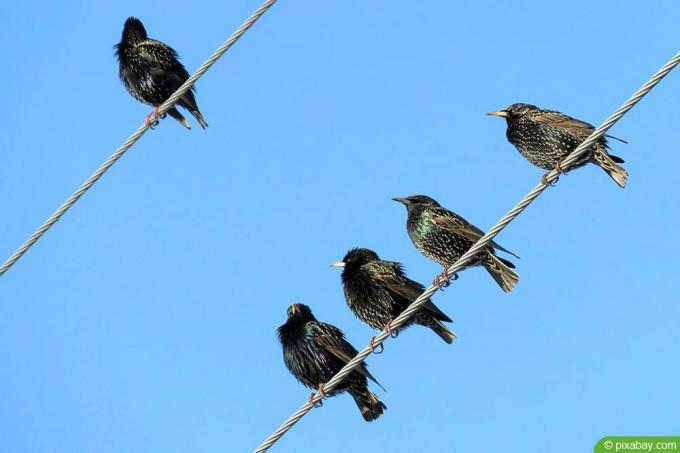
Build a nest box for starlings yourself - instructions
The native bird species, including the starling, are being increasingly crowded out in their habitat. Due to the high level of infrastructure and fewer and fewer nesting opportunities, it is not easy for starlings to look after their young. A nesting box can help here, which you can easily build yourself using the instructions.

Blackbird - profile, food and help in winter
If you can hear a rustling in the leaves or a beautiful bird song in the garden, then in most cases it is a blackbird. While the bird used to be shy and secluded in forests, it has become more accustomed to close proximity to houses and even nests there.
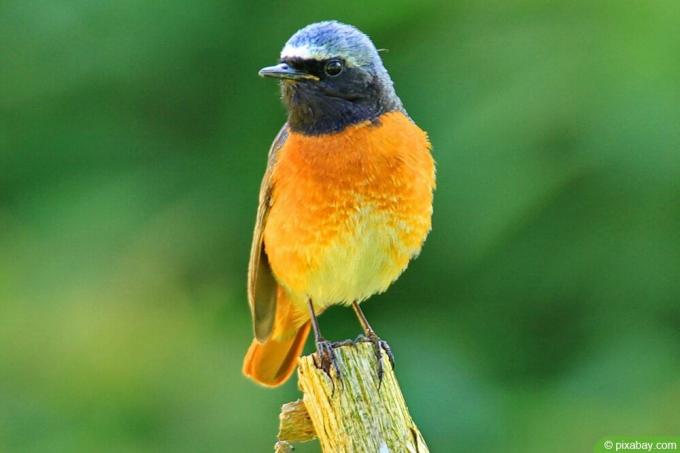
Redstart - build a wanted poster and a nest box
In the past, the redstart was thought to be the summer variant of the robin. Today, many people no longer know the colorful bird. This is because it is rarely found in our gardens. To stimulate much-needed help for the bird, the Redstart was voted 'Bird of the Year 2011'.

Hanging up nest boxes: direction for tits, star boxes & Co
Nesting boxes are a welcome support for our native birds, as they find fewer and fewer opportunities to build a safe nest in nature. Here you can find out what is important when hanging up a nesting box and the importance of the cardinal direction.

Secure the aviary and nesting box from cats - this is how you protect birds
When cats are out and about in the garden, it can cause a lot of stress for birds. Young birds in particular are easy prey. Here you can find out what methods bird lovers can use to make hunting more difficult for cats and to protect birdhouses and nesting boxes from them.
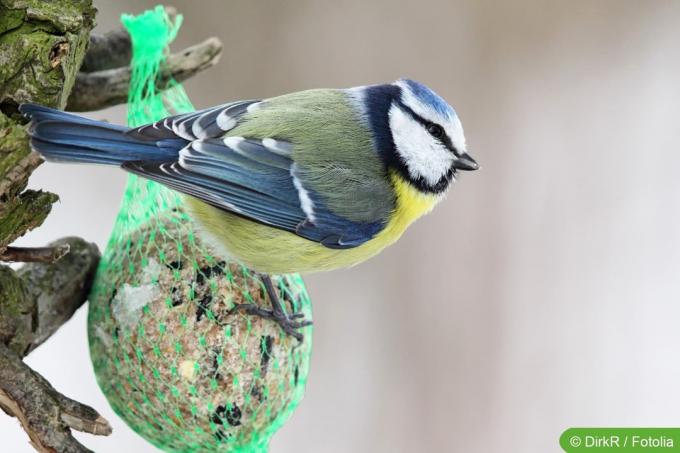
Blue tit - profile, way of life and nesting box tips
Blue tits start looking for suitable nesting sites as early as February. They start building their nest relatively early, usually in March or at the latest in April. The birds gladly accept the nest boxes that are hung up for them everywhere. They could also breed in natural tree cavities, but there is a lot of competition there. How can you support them as a hobby gardener?

